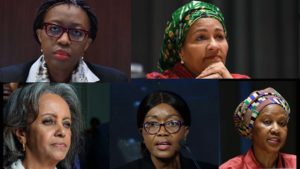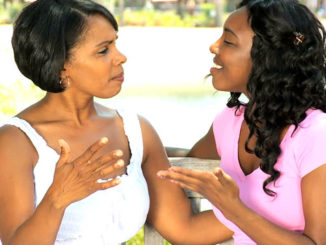There is no doubt that in the leadership and decision-making terrain, Africa is making significant strides. Change is visible, with many examples to show that. In 2017, as part of his pledge to institute gender parity in the UN, Secretary General António Guterres appointed Dr Vera Songwe as Africa’s first female head of the UN Economic Commission for Africa. He also appointed Nigeria’s Amina J Mohammed as his deputy. Africa also has more women in hitherto traditionally male-dominated roles in the upper echelons of multilateral and corporate institutions.
As 2018 draws to a close, a change that has shaken the gender disparity debate in Africa has occurred in Ethiopia. In a historic move on 25 October, its parliament unanimously elected Ambassador Sahle-Work Zewde as the country’s first female head of state. In the same month, Prime Minister Dr. Abiy Ahmed appointed 10 female ministers, making Ethiopia the third country in Africa after Rwanda and
Seychelles to achieve gender parity in their cabinets. These and other recent increases in the share of women ministers in African cabinets offers a unique opportunity for African women to showcase how gender parity can improve quality of governance and accelerate development in Africa. Ethiopia is very well suited to champion this objective and inspire the rest of Africa and the developing world. Ethiopia and Rwanda have shown that gender parity in the executive branch is an attainable goal.
Ultimately, gender parity in cabinets should translate into peace, social development, business and environmental dividends. Songwe alluded to this at a meeting to welcome the new Ethiopian president: “As we celebrate your appointment the 10 women ministers and the first Supreme Court president in Ethiopia, we can start talking about how we can work together and use the fund to create a network of young women fund managers, train them and then put them out in the market as we seek to address the fundamental gap in the access of women to finance architecture,” she said. Africa may have made significant strides on women’s participation in decision-making, surpassing Asia, the Pacific and the Middle East. But the continental achievements hide national and subregional variations, as facts and figures by UNECA’s African Centre for Gender (ACG) reveal.
As of October 2018, out of a total of 11,037 African parliamentarians, 2,591 were women, which represents a 23% average share of women in parliament in the entire continent. And of the 1,348 ministers on the continent, 302 are women. As such women’s representation in African cabinets remains on average at 22%, the ACG’s fact sheet – Women in Decision-Making Spheres in Africa – released in November 2018 pointedly reveals.
While this is commendable progress, it barely represents the halfway point to attaining gender parity in African parliaments. Yet ensuring women’s full and effective participation and equal opportunities for leadership at all levels of decision-making is one of the targets of the Sustainable Development Goals. In addition to its intrinsic value, women’s participation is essential to the formulation of effective policies, which respond to the differential needs of men and women.
Therefore, the fact sheet provides a comparative perspective on where African countries stand in women’s representation in both national parliaments and government positions.
Out of 35 countries with more than 33% female representation in national parliaments across the world, there are nine African countries, including Rwanda (61%), Namibia (46%), South Africa (43%), Mozambique (40%), Ethiopia (39%), Tanzania (37%), Burundi (36%) and Uganda (34%).

There is substantial variation across Africa as shown in Figure 2 below. While Southern Africa is close to attaining the 33% representation threshold, West Africa on average lags substantially behind other subregions. Out of 15 countries in West Africa, only five countries have over 15% female representation in parliament. Senegal leads the way with 42% female representation in parliament, ranking 4th in Africa.
In Southern Africa, Namibia and South Africa are within reach of gender parity in parliament with 46% and 43% female representation, respectively. Mozambique is also close at 40%.
In Eastern Africa, Rwanda leads the way with 61% female representation in parliament, ranking it 1st among all African countries and across the world. Ethiopia, Tanzania, Burundi and Uganda follow suit with over 33% female representation in parliament.
In North Africa, Tunisia and Sudan are close to reaching 33% threshold while Egypt records the subregional minimum at 15% female representation. Central Africa has slightly higher average women’s share relative to West Africa due to Cameroon where female representation in parliament reaches a subregional maximum of 31%.
Steady progress
Since the adoption of the Beijing Platform for Action, Africa has made steady progress on women’s participation in parliaments. Figures show that the average share of women in parliaments in Africa has almost tripled over 22 years. However, progress has slowed down since the early 2010s. In many African countries, the share of women in parliament must more than double its current level to reach the 50% gender parity target as enshrined in the Sustainable Development Goal 5, Target 5.5, Indicator 5.5.1.
Parity in the cabinets
The recent increase in the proportion of women in cabinets in some African countries, notably the achievement of gender parity in the cabinets of Ethiopia, Rwanda and Seychelles, offers a unique opportunity for African women to demonstrate how gender parity can improve quality of governance and accelerate development and inspire the rest of the continent and the world.
The Agenda 2030 with its specific target to ensure women’s full and effective participation and equal opportunities for leadership at all levels of decision-making acknowledges the instrumental role of women’s participation in politics. The fact sheet therefore provides a comparative perspective on where African countries stand in women’s representation in the executive branch of governments.
As of October 2018, there were 302 women ministers in Africa out of 1,348 in total. Consequently, women’s representation in African cabinets remains on average at 22% which is below halfway to attaining gender parity. When broken down into subregions, Southern Africa at 28% and Eastern Africa at 27% are doing much better than West Africa (18%) and North Africa (17%).
However, there is still a long way to gender parity in cabinets even in the top performing subregions. For instance, Mauritius and Lesotho are lagging behind the average of Southern Africa with 9% and 14% female representation in their cabinets, respectively. In Eastern Africa, Comoros, Democratic Republic of Congo, Djibouti and Somalia have less than 15% female representation in cabinets.
In North Africa, Mauritania leads the way with 30% female representation in cabinet while in Morocco only one female minister is present in the cabinet of 19 ministers. In West Africa, Mali leads the way with over 33% female representation followed by Senegal with 26% female representation.
Globally, recent developments have increased the number of African countries attaining over 33% female representation in cabinet. There are currently seven African countries in the list of countries with over 33% representation across the world. Consequently, Africa leads the developing world surpassing Latin America and the Caribbean.
Additional Data Source: Statistical Archives of Interparliamentary Union, October 2018.





